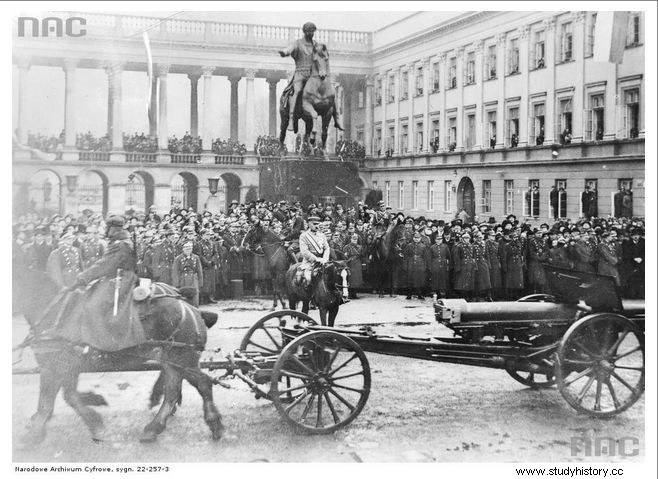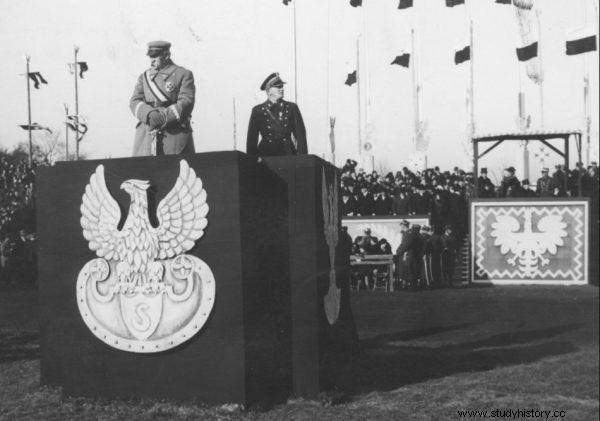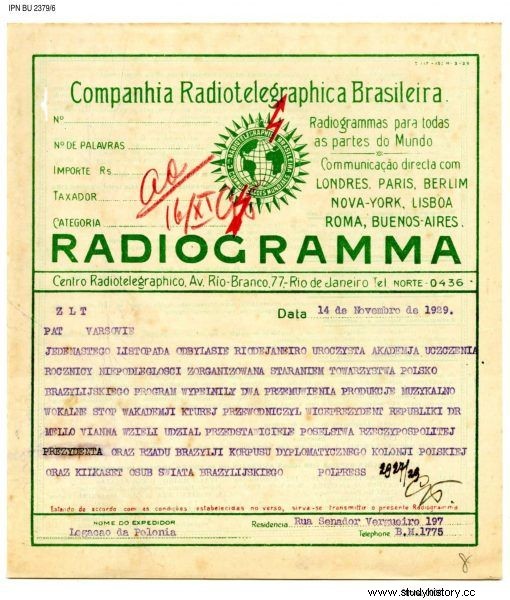Today, November 11 - the day of the end of the First World War and the symbolic date of the creation of the free Second Polish Republic - is celebrated with great pomp. But it wasn't always like that. Officially, this date became a holiday only in 1937. How, then, were the anniversaries of Poland regaining its independence celebrated earlier?
Fireworks, military parades, marches of civilians and white and red flags waving in the streets? Anyone who thinks that this way of celebrating Independence Day has anything to do with tradition is wrong.
The celebrations of the first anniversaries of the establishment of free Poland were not particularly grand - nor even took place on November 11 . Besides, Piłsudski himself did not care much about it. So how did the celebrations on this occasion look like in the interwar period?
Let's wait until Sunday…
First of all, for almost two decades from that symbolic date, it was not considered particularly important. Not enough to make her a day off, anyway. For this reason, all celebrations were usually organized on the first Sunday after November 11 (unless the holiday happened on a Sunday, as in 1923).
Another thing is that in the first years these celebrations were of a military nature. This was the case after the events of 1920, when Piłsudski - on the occasion of the second anniversary of independence - was honored with the Marshal's Mace (the nearest Sunday date was November 14). It was accompanied by cannonballs and a military parade, so it can be said that it was the first grand event of this type.

Independence Day celebrations on November 11, 1926
Why not on the first anniversary? The historian Andrzej Stawarz explains:"In 1919 there was no favorable situation to celebrate the anniversary of regaining independence, because wars were still going on over the borders of the Republic of Poland."
On November 11, it gained a slightly more "ceremonial" character after the May coup. Sanacja perfectly understood the propaganda potential of this date. So from then on, efforts were made to make the celebrations look like a public holiday. First, in 1926, Piłsudski made this day off (for officials). In a circular he exclaimed:
The above date should remain in the permanent memory of society and be imprinted in the minds of the young generation, which should feel importance and celebration at the dawn of their lives on that fateful day.
Four years later, the Marshal was followed by the Ministry of Religious Denominations and Public Education, which exempted students from school on that day, because on November 11 "it should be used for the purpose of educating young people in a civic and state spirit against the background of historical events related to that day".
Independence propaganda
How was this "educational influence" carried out? Official military parades were organized on Saski Square (later renamed Marshal Józef Piłsudski Square). Later, the parades were moved to Pole Mokotowskie. The Marshal himself participated in them until 1934, although during the last ceremony he was already seriously ill. In turn, his beloved mare Kasztanka presented herself for the last time in 1927. Andrzej Stawarz reports:
From 1926 the central celebrations of the anniversary of regaining independence served to perpetuate the cult of Józef Piłsudski and popularize the legend of the legion. It is also customary to give the Marshal, also by foreign guests, occasional gifts (e.g. sabers), diplomas, and to honor him with decorations from foreign countries.
At the same time, more and more pro-state organizations, including youth organizations, joined the celebration of Independence Day in many localities throughout the country.
After Piłsudski's death, the tradition of military ceremonies was sustained - ultimately, the anniversaries of independence were also to be used to "boast" about the country's defensive potential. Nevertheless, it was not until April 23, 1937 that the Seym of the Republic of Poland passed that on November 11:
as the anniversary of regaining independence by the Polish nation and as a day forever associated with the great name of Józef Piłsudski , the victorious Commander-in-Chief in the fight for the freedom of the Fatherland - is a solemn Independence Day.

Józef Piłsudski receives the parade on November 11, 1934.
The Polish community is happy
The independence celebrations abroad were much more modern. The Polish diaspora could not pass up such an occasion to celebrate. For example - as announced by the Polish community in Nowy Świat - on Sunday, November 11, 1928, on the occasion of the 10th anniversary of Poland's liberation, a ceremony was organized at Mecca Auditorium at 133 West 55, during which the consul general and "other outstanding citizens" (m Colonel R. Rómmel and a certain attorney Sapiński). The whole was graced by performances of the orchestra and the choir "Echo" performing occasional songs.
The Canadian newspaper "Zolkowiec" devoted extensive articles every year to successive anniversaries. The Polish mission in Rio de Janeiro on November 14, 1929 even sent a radio-telegram with information about the anniversary celebration in Brazil! As reported (original spelling preserved):
The program was filled with two speeches, music and vocal productions STOP vacademia, chaired by the vice-president of the republic, Dr. Mello Vianna, was attended by representatives of the Rzeczpospolita mission, the president and the Brazilian government, the diplomatic corps of the Polish colony and several hundred people from the Brazilian world.

Radiotelegram with information about the anniversary celebration in Brazil
The outbreak of World War II interrupted this nascent tradition. For the last time, in the areas controlled by the Polish Committee of National Liberation, official celebrations were organized in 1944. This time again, the celebrations were of a propaganda character:they were to help win the trust of Poles in the new governments.
However, as early as 1945, independence (as the National Day of the Rebirth of Poland) began to be worshiped on a completely different day - July 22. Dr. Stawarz sums up:“During and after World War II, efforts were made to continue the traditions of the 11 November celebration. Officially, the holiday was reintroduced in 1989 ”.
Bibliography:
- An excerpt from the Polish diaspora newspaper "Zwiazkowiec" (Toronto, Canada) No. 11 of November 1933 regarding the celebration of the 15th anniversary of Poland regaining independence, IPN BU 3726/11.
- Excerpts from the Polish diaspora newspaper "Nowy Świat" (New York, USA) on 11 November 1928 regarding the celebration of the 10th anniversary of Poland regaining independence, IPN BU 2382/3036.
- W. Kowalski, 80 years ago the first Independence Day celebrations took place , Dzieje.pl (access:10/11/2019).
- Radiotelegram with information about the 11 November celebration in Brazil sent by the Polish Legation in Rio de Janeiro on November 14, 1929, IPN BU 2379/6.
- A. Stawarz, Anniversaries of regaining independence in the interwar period , The Józef Piłsudski Museum in Sulejówek, 2013.
